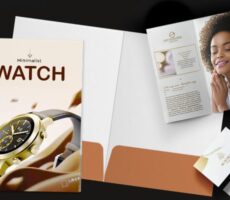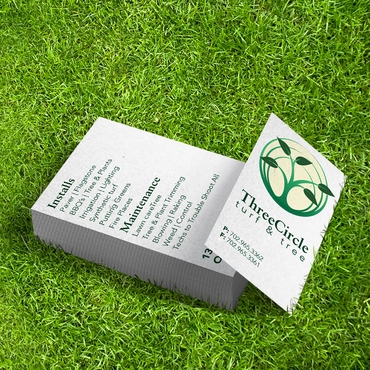If you’re new to Overnight Prints, you might find yourself wondering what some of the print terms mean when you’re customizing products or uploading your designs. From technical jargon to industry lingo, it can be overwhelming. That’s why we created this easy-to-follow glossary. Whether you’re printing business cards, flyers, or invitations, this guide will help you feel confident placing your next order.
For more help planning your print campaigns, check out Monthly Marketing Ideas: Print Campaigns to Run Every Month in 2025. And if you love saving on your orders, don’t forget to subscribe to our newsletter — it’s the easiest way to hear about overnight prints coupon codes and special promotions.
Design & File Terms

Here’s a breakdown of the key design and file setup terms that affect how your print project turns out. Mastering these basics helps ensure your final product looks exactly as expected.
Bleed: Extra space (usually 3mm) around your design that ensures color or images reach the edge after trimming. Always extend backgrounds or images into the bleed area.
Safe Zone: The area inside the trim line where all important text and images should stay to avoid being cut off.
Trim Line: The final size your printed product will be cut to. Anything beyond this line (unless it’s bleed) will be trimmed.
DPI (Dots Per Inch): A measure of image resolution. For best print quality, upload files at 300 DPI.
CMYK: The four ink colors (Cyan, Magenta, Yellow, Black) used in full-color printing. Always convert your files to CMYK before uploading.
RGB: The color mode used on screens. Avoid uploading RGB files, as they may print with inaccurate colors.
Vector vs. Raster: Vector files (like AI or EPS) scale without losing quality. Raster files (like JPG or PNG) are pixel-based and may blur when resized.
Once you’re confident with your design setup, you can apply it to products like business cards, brochures, postcards, or even event invitations.
Paper & Material Types

Different paper weights, textures, and finishes can completely change the feel of your printed piece. Here’s what you need to know to select the right material for your needs.
Want a deeper dive? See our guide on Understanding Paper Types and Finishes for Your Print Needs.
GSM (Grams per Square Meter): Indicates paper thickness. Higher GSM = thicker, sturdier paper.
Cardstock vs. Paper Stock: Cardstock is heavier and more rigid, ideal for business cards and postcards. Paper stock is thinner and more flexible, perfect for flyers or letterheads.
Matte vs. Gloss vs. Satin:
- Matte: Non-reflective, smooth finish.
- Gloss: Shiny and vibrant.
- Satin: A soft, low-sheen finish between matte and gloss.
Coated vs. Uncoated: Coated paper has a sealed surface (like gloss or matte), which enhances color and prevents ink absorption. Uncoated paper is more absorbent and writable.
Writable Surface: Some products have a writable back (often uncoated) for notes or signatures.
For example, if you’re printing appointment notecards or greeting cards, an uncoated back is ideal. Promotional postcards or posters often benefit from a glossy or satin finish to make visuals pop.
Print & Finish Options
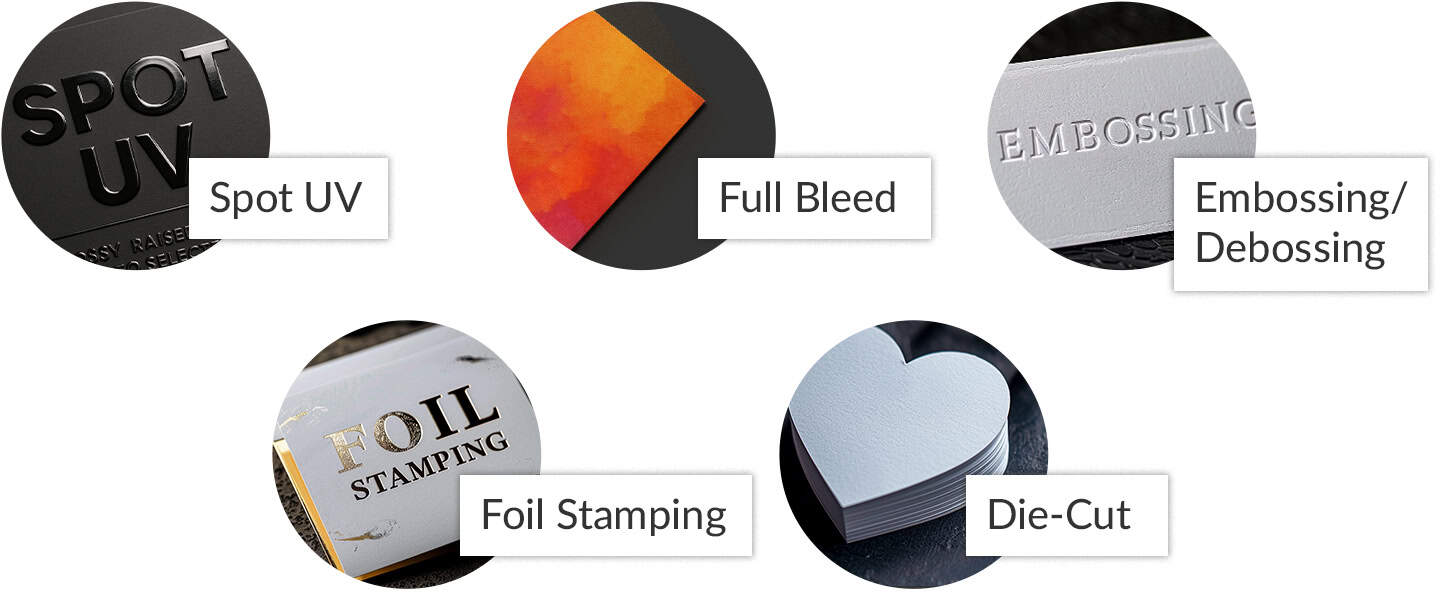
Adding specialty finishes can elevate the look of your project. These options bring texture, shine, and a professional edge to everything from business cards to packaging.
Spot UV: A glossy, raised coating applied to selected areas of your design for a high-impact look.
Full Bleed: When the design or image extends beyond the trim line, creating a seamless edge-to-edge print.
Use these finishes when you want to add a premium, tactile element to your piece—like luxury business cards, gift tags, or specialty mailers.
Product-Specific Terms
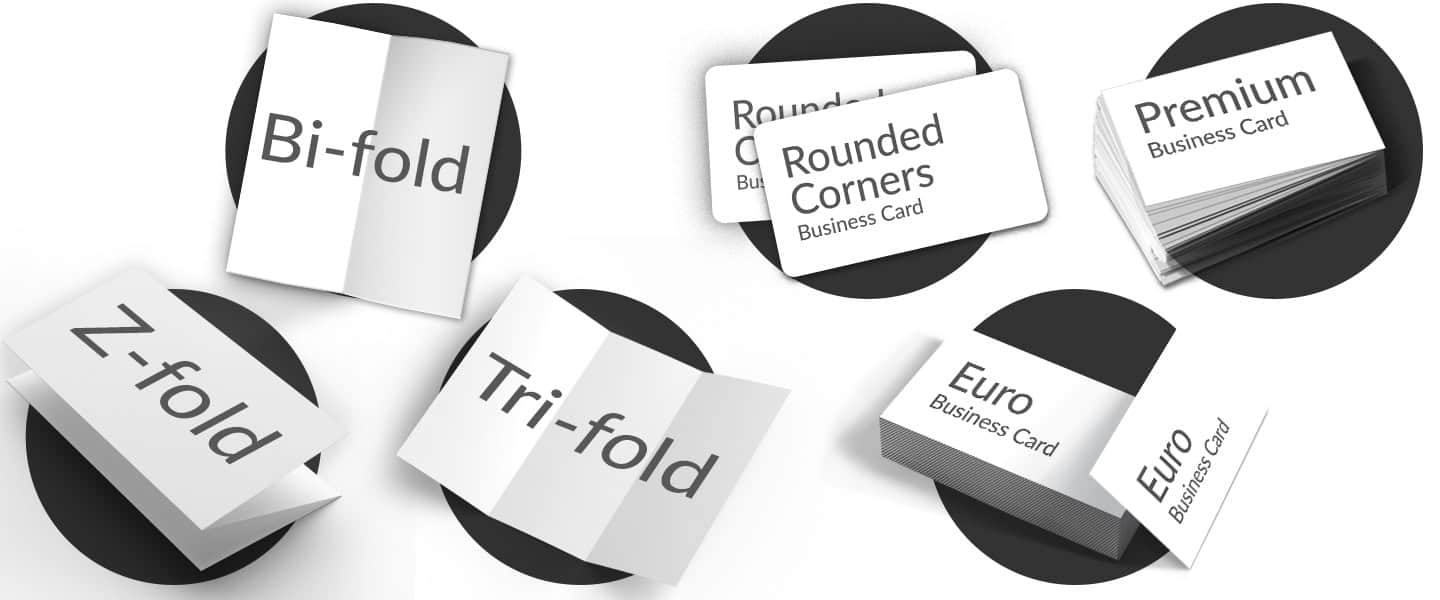
Each type of product comes with different layout options and terminology. These terms will help you understand what to expect when customizing brochures, postcards, or business cards.
Need more inspiration for product design? Check out How to Make Your Business Cards Stand Out in 2025 and How to Design Effective Marketing Brochures.
Fold Types:
- Bi-fold: Folded in half (like a greeting card).
- Tri-fold: Folded into three panels.
- Z-fold: Folded in a zig-zag pattern.
Business Card Finishes:
- Rounded Corners: Softer edges for a modern look.
- Premium: Thicker, higher-quality cardstocks.
- Euro: Slimmer, longer style, popular in Europe.
Postcard Sizes: Common sizes include 4”x6”, 5”x7”, and 6”x9”. Make sure your design fits the chosen format.
Brochure Panels: Refers to the number of folded sections (e.g., a tri-fold has three panels).
If you’re organizing a trade show, consider rack cards or folded brochures for handouts. For event invites or holiday cards, announcements and folded greeting cards are popular options.
Turnaround & Shipping Terms
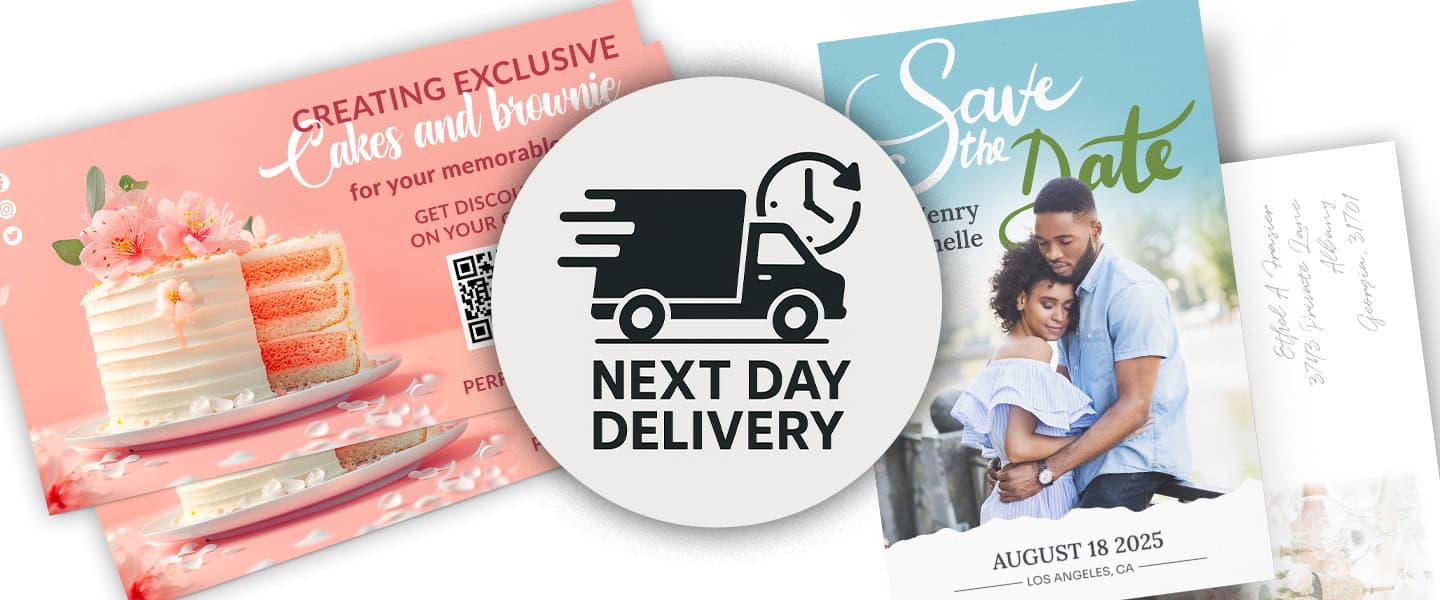
Timelines can affect when your printed items arrive, and how much they cost to ship. Here are the terms that explain how our production and delivery process works.
Production Time vs. Shipping Time: Production time is how long it takes to print your order. Shipping time is how long it takes to arrive after production.
Next Day Delivery: Available on select products. Ensure you order before the cut-off time.
Rush Order: Priority printing for faster turnaround.
Cut-Off Times: The deadline each day to place your order and have it counted for that day’s production.
Quick-turnaround items like flyers, postcards, and notecards are ideal for last-minute promotions or events. Just select a rush or overnight option during checkout, and keep an eye out for overnight prints coupon codes in our newsletter to save on fast orders.
Final Tip
Still confused by a term? Our live chat and customer support team are here to help you every step of the way. Don’t hesitate to ask, we want your print experience to be smooth, easy, and professional.
Whether you’re planning a wedding, launching a promotion, or sending a thoughtful message, we’ve got the print products to match from custom stickers and bookmarks to wrapping paper and greeting cards. And if you want the best deals year-round, subscribe today — our subscribers get first access to overnight prints coupon codes and exclusive promotions.
Happy printing!





